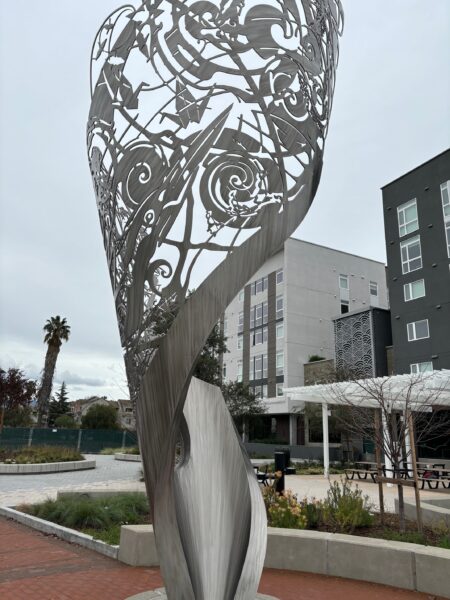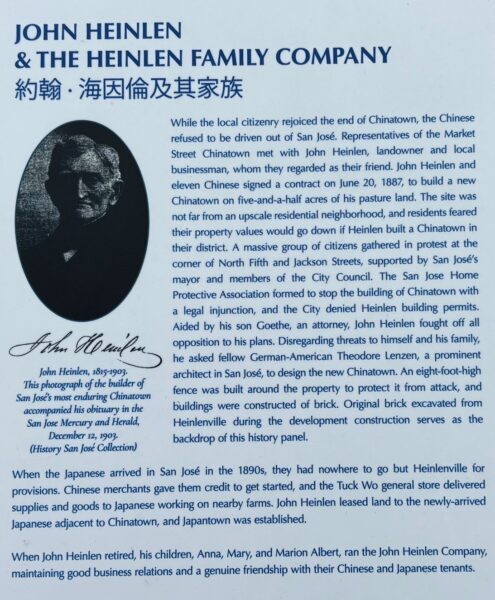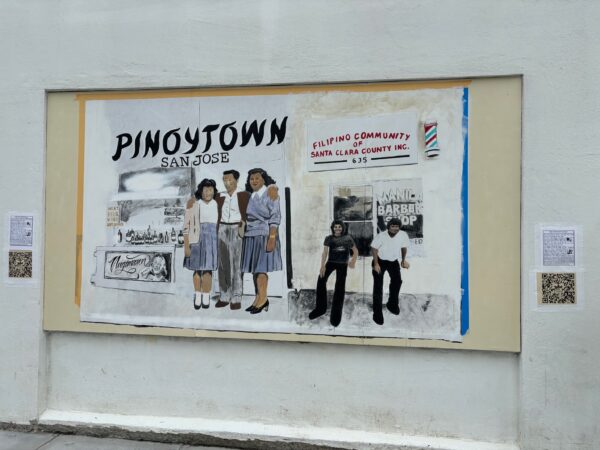Heilenville Park opened in October of last year in San Jose’s Japantown, but I only recently got around to seeing it for myself this past weekend. The park is named after the Heilenville Chinatown that was located at the site. This Chinatown was created after a previous one located in current day San Jose downtown burned down, a sad but common occurrence throughout the American West at that time.
The park includes signs talking about the history of Heinlenville Chinatown. Heinlenville is named after a German immigrant named John Heinlen who leased land to the local Chinese community. From a previous historical tour, I learned what Heinlen did, but the description in the park (see picture below) was a revelation to me in terms of the amount of opposition he encountered in his plan to allow the Chinese to live there. Given the past history of the deliberate destruction of Chinatowns, an eight foot wall was constructed around the area.
Japantown sprouted up next to Heinlenville and Pinoytown would emerge there later. As residents gradually integrated into the rest of San Jose, Heilenville Chinatown faded, and the last remnants were torn down in 1949. San Jose Japantown revived after the internment and is still there today, one of the three remaining Japantowns in the United States.
While there are some trees and a play area, but Heilenville Park seemed more like a plaza than a park. Apparently that was a design choice, as local associations wanted an open space to hold events.
The mural below commemorating Pinoytown was added recently around the corner from the park. If you want to visit Heinlenville Park, it is located on 6th street in San Jose, between Taylor and Jackson. Documentarian Jessica Yu also created an award winning short film about Heilenville called Home Base: A Chinatown called Heinlenville.











